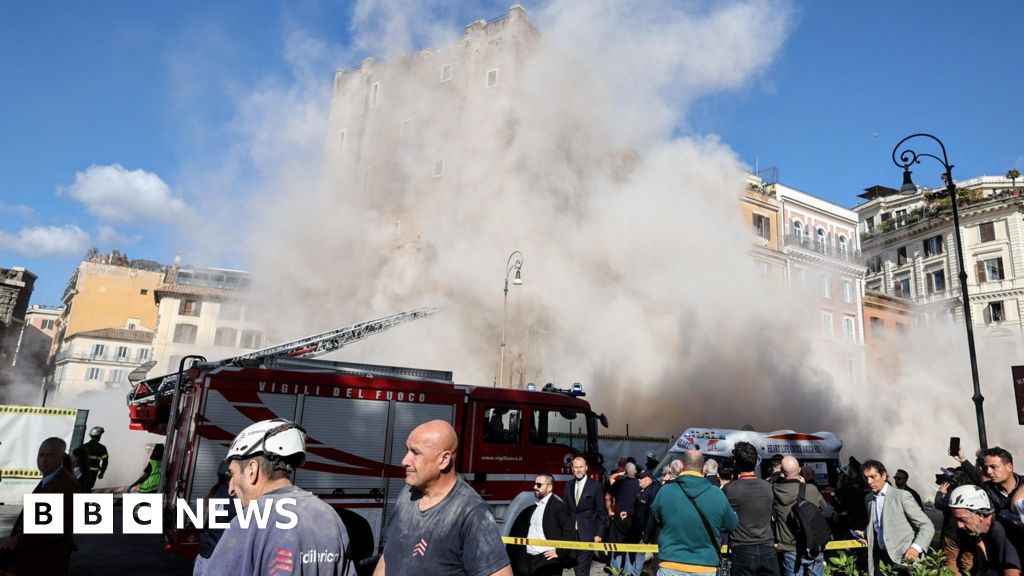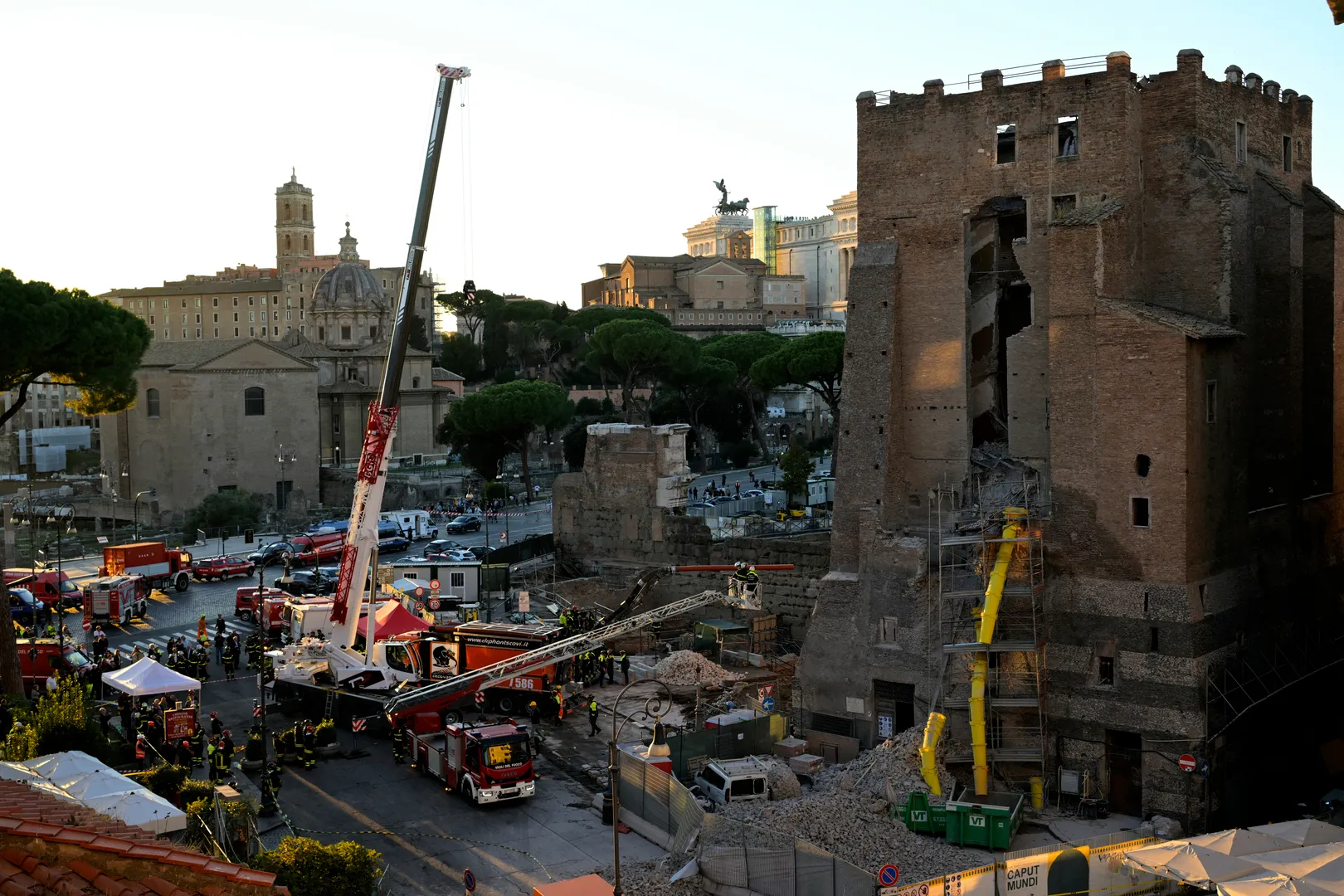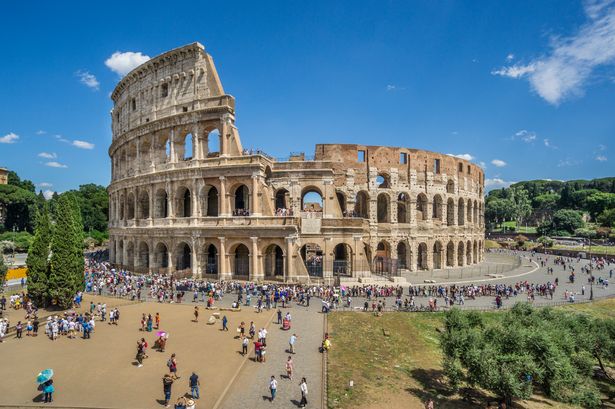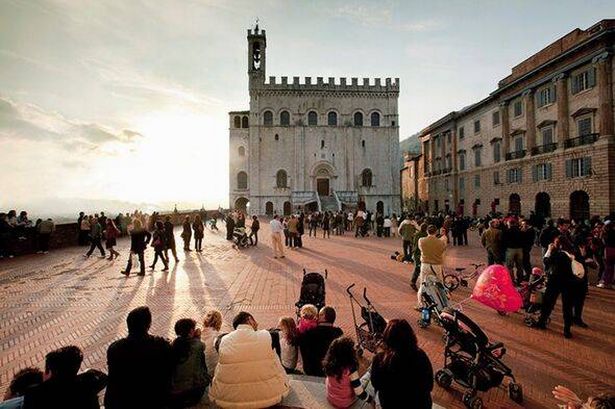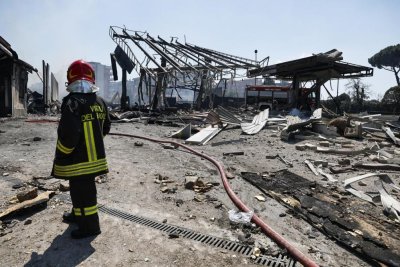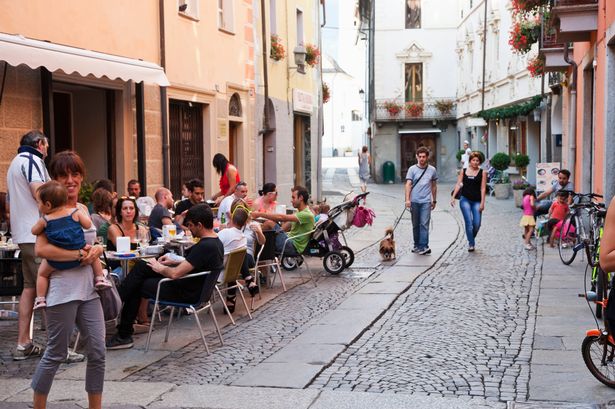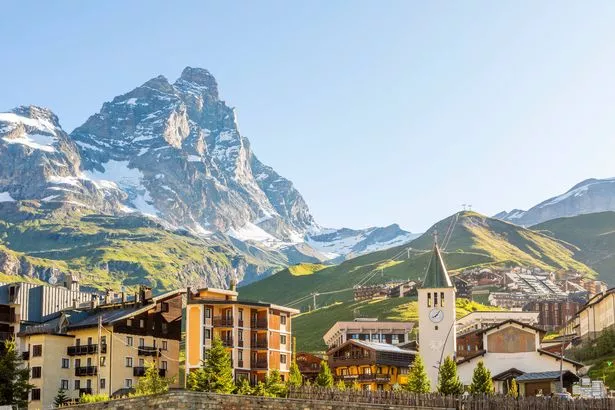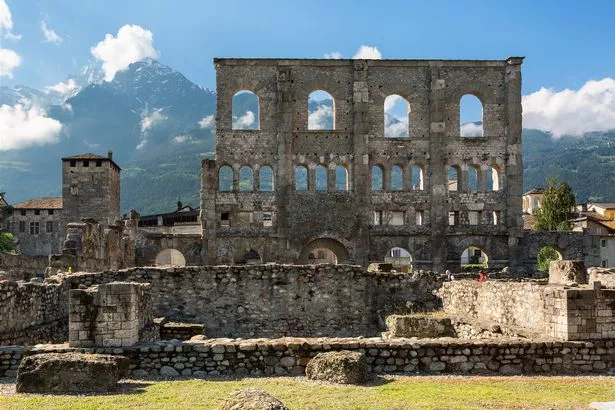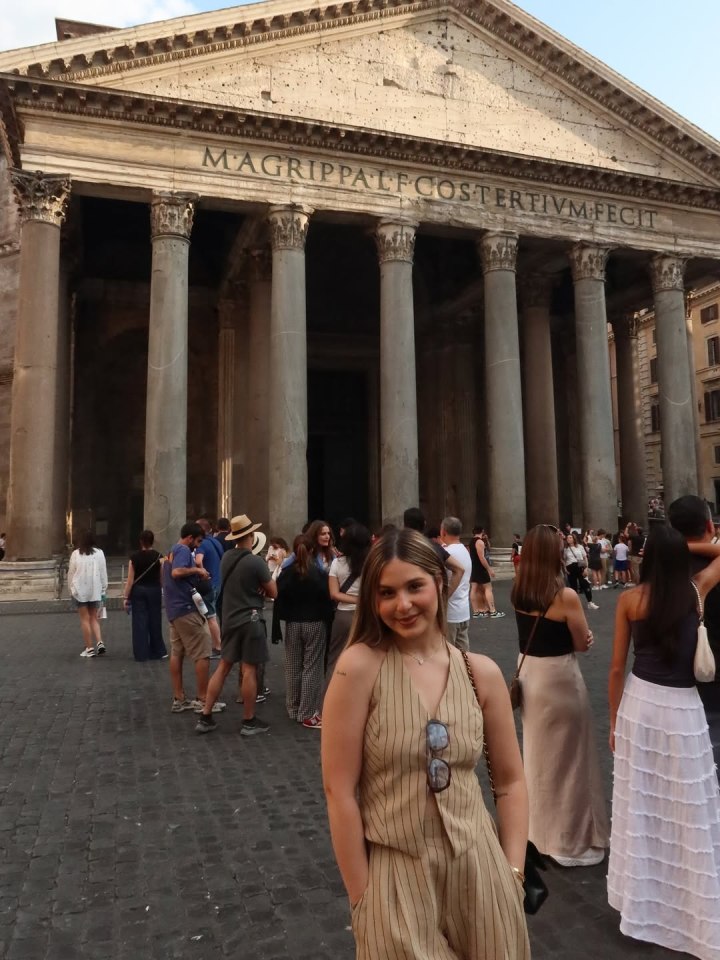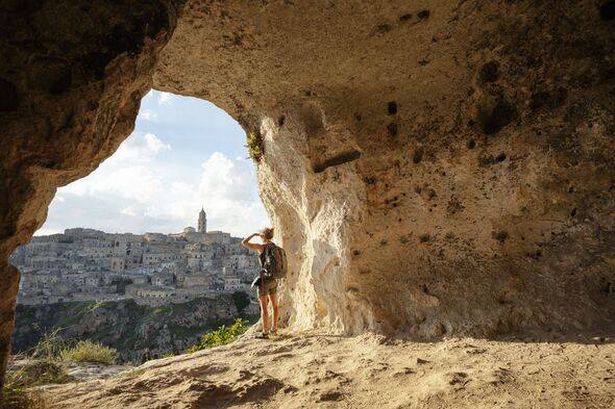Rome Ramirez wasn’t built in a day.
He was once a guitar-strumming, teenage Sublime fan in a Mexican American household in Fremont, Calif. At 18, he moved to Los Angeles to follow his dream of making music. He swept floors, lived in his van and eventually did the impossible: He became the singer of his favorite band.
In 2009, 13 years after the death of Sublime’s founding singer-songwriter Bradley Nowell, Rome befriended Sublime’s remaining members, Bud Gaugh and Eric Wilson, and became the frontman of Sublime with Rome — playing to an established fan base in amphitheaters around the world. Behind the scenes, Rome developed a robust songwriting career of his own, cutting his teeth in the studio-session culture in L.A. and racking up credits on Enrique Iglesias and Selena Gomez songs.
Yet eventually, the band started to feel more like a job than a calling. After several lineup changes, Sublime with Rome embarked on its farewell tour in 2024. “For the majority of being in Sublime, our recording schedule was so busy,” he says. “I knew that in order to do a solo career, it takes everything from you if you want to do it right, so that was not on the mind.”
Despite being a lifelong California boy, Rome moved his family to Nashville during the height of the COVID-19 pandemic. There are perks to living in America’s songwriting capital — like a slower pace of life and the ability to do “more errands per day than in L.A.,” he says with a laugh. But now, he says that he and his children are some of the only Latinos in their neighborhood.
“There [are] a lot of people who leave California,” says Rome. “They trash-talk California, but it’s just such a huge part of my identity and culture — growing up as a Mexican American in California, that Chicano culture. I will always love Los Angeles.”
After 15 years in Sublime with Rome, the 37-year-old has forged a new path as a solo artist. His sound is a West Coast cocktail of beachy reggae and hip hop-inspired grooves, specially made for summertime — like his new single “Slow & Easy,” featuring the Dirty Heads, his friends from back when he slept in his van.
It’s the first offering from his debut EP, “Gemini” — “It’s about the duality of my music, I can’t be put into a box,” he says — which is set for a Sept. 19 release. He’s also announced a slate of tour dates in the U.S., starting Sept. 17 in Destin, Fla.
This interview has been condensed and edited for clarity.
Your solo career was kick-started by stepping down as the lead singer of Sublime with Rome. Was having a solo career something you had in your head for a while?
Through the course of touring with Sublime, I was really heavily involved in songwriting. I was doing all kinds of records for people I really looked up to — like Selena Gomez and Jason Derulo and Enrique Iglesias. Huge names. As a kid who grew up writing songs in his mom’s basement, this was just like a dream come true.
It wasn’t until the pandemic happened where for the first time Sublime with Rome wasn’t touring, we were at home and I started live-streaming. People were showing up in these rooms — like 500 to a thousand people. I was one of the first people in my music community who was already outfitted with cameras, ready to go in the studio. I would start with a Sublime album and go through every song on the stream. And then the next album, then the Sublime with Rome album, then I would do covers. After about like six months, I ran out of songs and people were just asking like, “Dude, do you have any music? Like, are you working on anything?” And honestly, I hadn’t worked on music for myself in so long.
I think part of that was not wanting to dig deep into traumas, [like] growing up in a household with drugs. But during the pandemic, I had time to start writing music again for fun — playing with sounds that I loved and grew up on, and starting to pull the scabs off of [wounds] that I tucked [away] in the past. After a while I had a handful of songs, and I just knew I [couldn’t] put them in the Sublime with Rome set. This thing I love to do started to feel like a job, and that is a no-go. So I asked myself, “Am I going to do Sublime with Rome for money, or am I going to really follow something that I believe in?”
We started having conversations about what the future of the band was looking like prior to our summer tour in 2023. I’m really glad that everything happened the way it did. We had a roll out for everything. I needed to trust my gut and follow through with my belief in this music and what I’m building.
“Lay Me Down” with Dirty Heads is one of your biggest songs, with nearly 120 million Spotify plays, but it came out in 2010 — much earlier than your current venture in your solo career. What’s the story behind this song?
I’m from the Bay Area, but I moved down to Los Angeles when I was 18 to go make something of myself. I was hanging around this recording studio that the Dirty Heads were just getting started at.
I was just interning, sweeping floors, [eating] cheeseburgers, that kind of thing. Everyone knew that I could write a song, and eventually, after hanging out there for so long, me and the Dirty Heads worked up a friendship. They said, “Let’s get together and write a song one day.”
So we barbecued some hot dogs and just hung out in one of the guys’ backyard with a couple of guitars on a picnic bench … and we wrote “Lay Me Down.” The song sat around for a year, but we really liked it.
They were going on tour in the van and I wasn’t doing anything — I was homeless at the time, Sublime wasn’t even a thought. They offered me to go on the road with them, so I did and played that one song with them. From there, our manager took the demo to KROQ. The song started getting played on the radio and the shows got fuller. It was such an amazing experience. It was just just by the grace of God, it like all worked out and our lives changed from that point. We cashed our first checks and bought our first cars together from that.
You collaborated with the Dirty Heads again on your recent single “Slow and Easy.” It’s your first single since you’ve gone solo. What was that process like?
It’s come full circle with my best friends again. I knew this song was special. I went into the studio with the aim of — “I want to make a summer song that feels like a Van Morrison record, but [an] Uncle Kracker [vibe]. Real simple.”
I went in with my boy, Nick Bailey, who I write a lot of music with, and we nailed that song in two hours. After I got the demo I was like, “Man, it’s so close. What if I put the Dirty Heads on it? [With] a little rap and a little melody, it would just be so different.”
They loved it. They sent me their vocals the next week and I was like, “OK, I feel like this is a good song.” Eventually some awesome promoters at radio stations heard it and they wanted to take a chance on the record.
The summer vibes are strong on “Lay Me Down” and “Slow and Easy.” What artists introduced you to this sound that’s present in everything you do?
I grew up on Motown and Bob Marley. That’s what I circled back to after I left Sublime.
As I was working on music during the pandemic, I was like, “What do I want to hear? What’s the shit that I like?” And it’s like Stevie Wonder, it’s the Supremes, it’s the Four Tops, it’s Fiona Apple, it’s Leon Bridges, it’s Van Morrison. I really like feel-good music that sonically reminds me of an older time.
I have kids now, so I’m very conscious about the message I put into the world. I’ll try to write a song that the world could benefit from hearing, but not make it a preachy song.
How would you describe the sound of Rome?
The underlying factor is soul music. When you hear soul music, you think of Teddy Pendergrass and things like that. I love soul music. [Take] Bradley’s voice in Sublime, you cannot tell me that that man wasn’t a soul singer.
That’s the music that I really gravitate to, music that just feels really honest. Reggae music [lives] in me. Jack Johnson is another huge influence. My sound is reggae and soul and pop music, for lack of better words, because I write simple-ass songs.
How do you feel like your Mexican heritage makes its way into your music? Or in how you move and how you present yourself?
Growing up Mexican shaped my whole framework for how I live my life. I don’t speak Spanish, but I grew up in two households that were fully fluent in Spanish. All my friends growing up were Mexican. [I remember] seeing Carlos Santana playing with Rob Thomas on [television] and my dad was like, “He’s mexicano right there.” Man, that was pretty sick.
Growing up in a really thick Mexican culture [meant] both my parents worked their ass off, but at the same time, family always came first. These are the kind of morals that are really instilled in Mexican culture, that I’m so proud that I have. As a family man now, those things are so prominent in my life. We take a lot of pride in what we do, we work our asses off … then when it’s time to play, we play.
What makes a good summer song?
Something that you don’t have to try too hard to listen to. There are some songs where you’re like, “All right, I need to get in the car and drive and listen to this thing, ride it out the gate.” When I envision a summer song, it’s very simple and easy to play.
People online are debating what the song of the summer is in 2025. What has been your song of the summer?
In terms of listening and all the damn content I’ve been making, it’s “Slow and Easy!” But aside from one of my own songs, probably “Golden” from “KPop Demon Hunters” because that’s what my kids are spinning. The music is shockingly good. It’s like Max Martin s—.
You’re on quite a big U.S. tour. How is it going?
It’s so sick. We just rolled out a couple dates in Florida just to test the waters and those shows are selling really good, so promoters have been adding more and more.
I’ve been to so many of these places [with Sublime], of course, but the energy’s different. I’m playing smaller spots, [connecting] with people before and after the shows. You can’t really do that in amphitheaters. I’m experiencing everything in reverse. I was homeless when I met Sublime and then I was on the tour bus. Now, it’s like we’re climbing up the ranks again.
I have such a long lineage of songs I’ve been working on and the fan base — shout out to the Romies — who’ve followed me over the years. Putting together the set list has been a celebration of the different eras of my life. I’m just having a lot of fun doing this.
